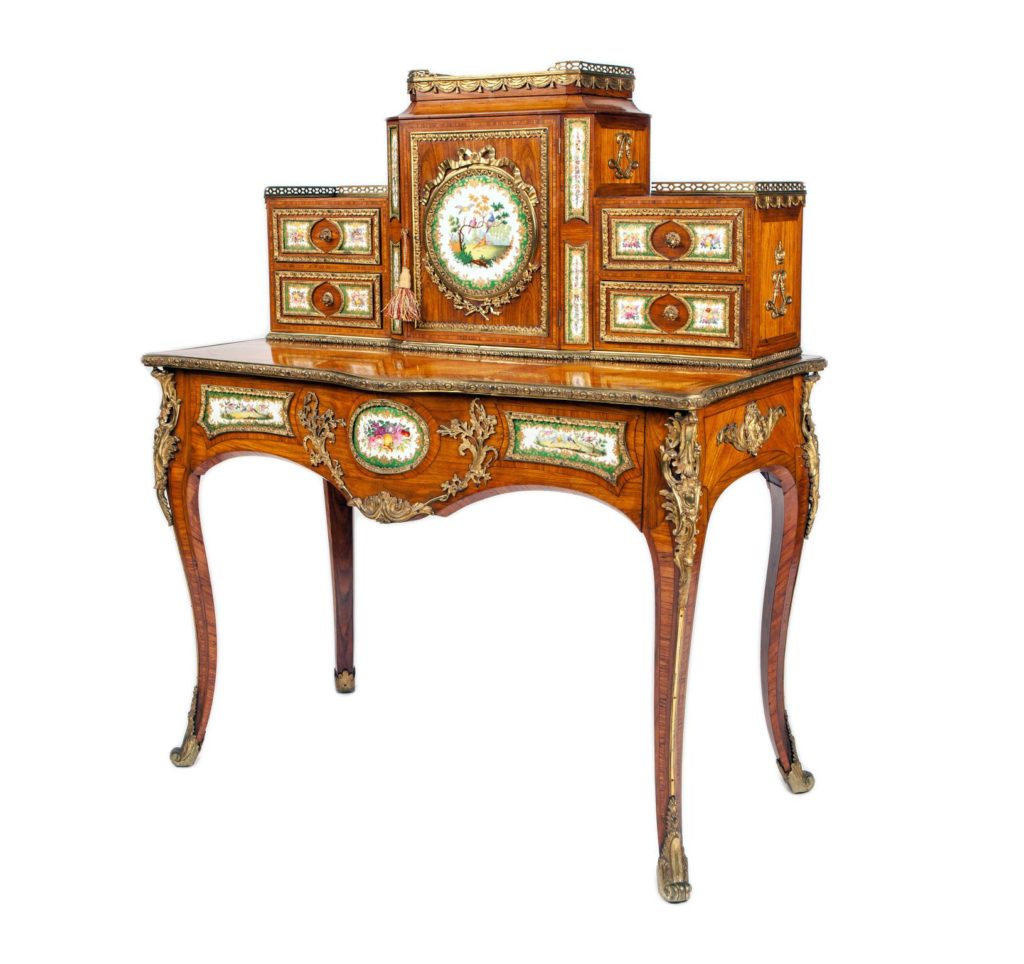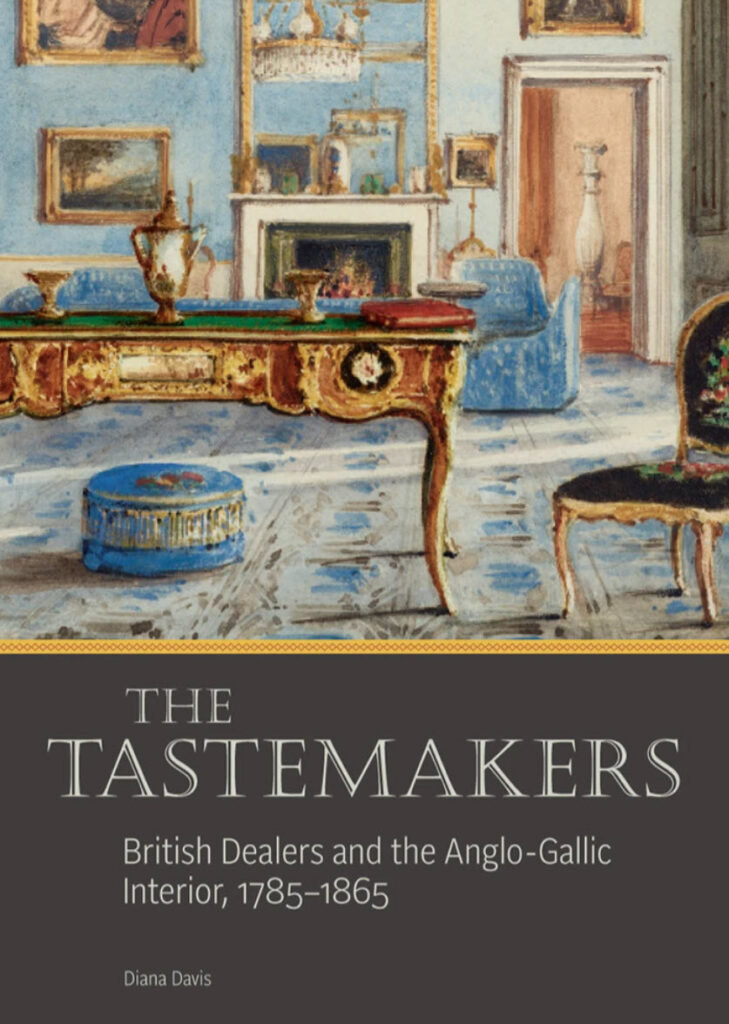
Perhaps post Brexit any discussion about the cultural links between Britain and France is fraught with, shall we say, dissension. Still, there’s no denying those links go back centuries, and just at the moment, following on from the rather muted celebrations of the bicentenary of the accession of Francophile George IV in 1820, a spate of publications and exhibitions are overt reminders of what’s been hiding in plain sight.
I’ve just finished reading a masterful account of the so-called Anglo-Gallic interior that found its apogee in the early years of the 19th century in the recently published The Tastemakers: British Dealers and the Anglo-Gallic Interior 1785-1865. Written by academic and furniture historian Diana Davis, it provides a wonderfully lucid account of the demand for French luxury goods, including furniture and fabrics, that spawned an international trade to which dealers in London- English and emigres- responded. That response, in the case of Edward Holmes Baldock, arguably the most successful of these, artfully tailored French taste to suit English preference. Perhaps I should say ‘altered’, as his firm made a career of breaking up French pieces to suit the needs of his English aristocratic clients. Now of course all of us of a connoisseurial bent shudder at the thought of this, but at the time, there was nothing of what in our own time would be considered an unforgiveable solecism.
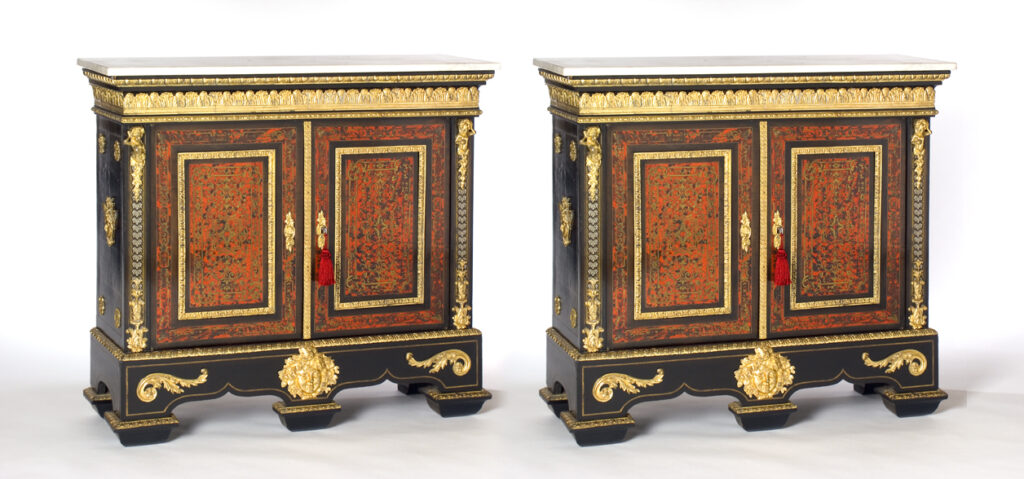
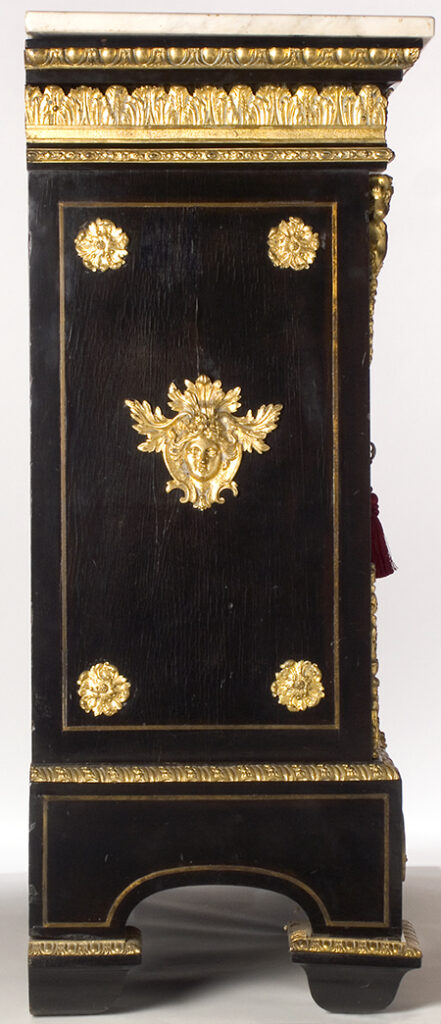
Frankly, any discussion about what design and decoration meant in its own time I find somewhat liberating, and the expansive, well-reasoned view that Davis employs in her book makes me realize, as it should anyone who reads it, that what we consider in this day and age as an English country house style has much more to do with the imaginative strictures employed by 20th century interior designer John Fowler. The bright, gilded, highly ornamented ‘Louis’ interiors all the rage in the early 19th century were toned down and very often occluded, certainly in the case of soft furnishings, with a cover of floral chintz. Cozy, perhaps, and a rubric that informed most 20th century design, but far, far distant from what was wrought a century or so earlier.
We’ve ourselves handled a few pieces of what I formerly, and dismissively, considered confections by Baldock, including a pair of cabinets with central panels of impressive Boulle marquetry. Upon inspection, it becomes apparent that, while the Boulle panels are well made, the balance of the piece is rather less skilled- not crude, mind you, but the moulding in lacquered brass is cut and mitred at the corners. The fine chasing of the premier partie of the Boulle panels is not matched in skill by the less than perfect casting of the mounts on the rest of the cabinet. Even so, they were plainly stamped with ‘EHB’ marking them the production of the Baldock workshop- and, frankly, they look wonderful in their current home in Chicago.
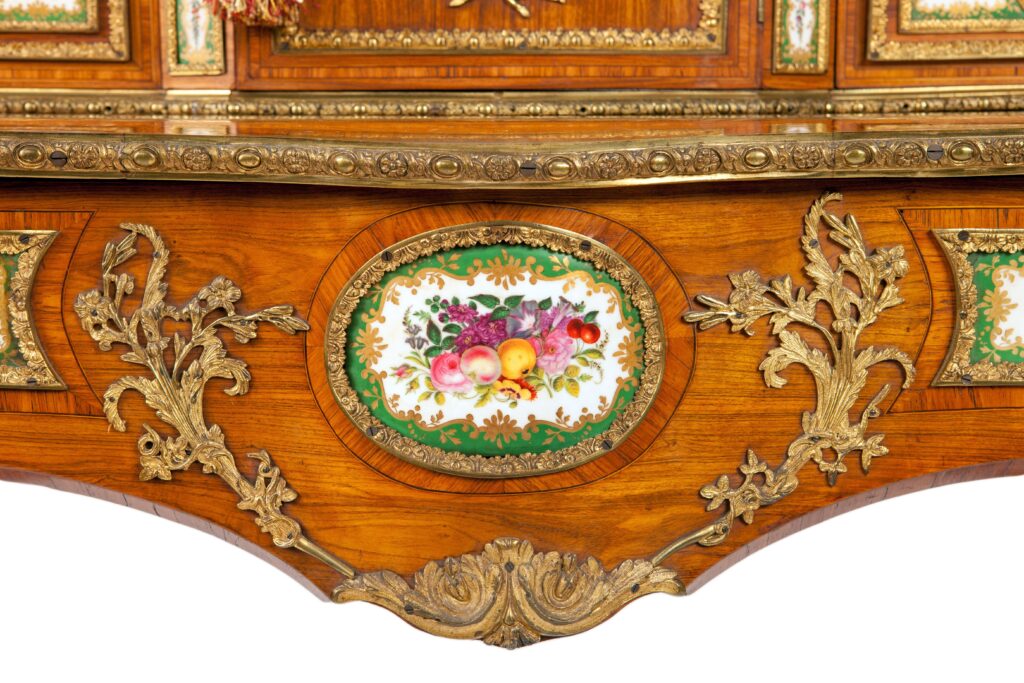
In our current stock, we’ve got something else of Baldock that may be entirely his workshop’s own manufacture, albeit in the then fashionable ‘Louis’ style- a bonheur du jour in rosewood and kingwood, inset with wonderfully detailed porcelain panels. Florid, but again, in the style of the time. Among the piece’s many intriguing features is to consider that the porcelain panels, though in the manner of the Sevres that was sought after by British aristocratic buyers, might in fact be Coalport- Baldock, as with other dealers who catered to the demands of the British bon ton, provided something French inspired in the manner of the ancien regime, but of entirely English manufacture. Intriguing and, between
ourselves, the several talking points about it rendering the piece all the more appealing. Indeed, when I first caught sight of it, it was the joinery and the finely wrought dovetails of the mahogany drawer linings that made it apparent the piece had much more to do with England than its ‘Louis’ outline would indicate. Was this legerdemain on the part of Baldock? Perhaps, but not done in a manner or with a motivation that we might today consider particularly egregious. As Davis makes clear, anything in the French manner, whether ancient or newly made was equally acceptable in any aristocratic home.
Highly suggested reading
Diana Davis, The Tastemakers: British Dealers and the Anglo-Gallic Interior, 1785-1865, Getty Research Institute, 2020
Kate Heard & Kathryn Jones, George IV: Art & Spectacle, Royal Collection Trust, 201

